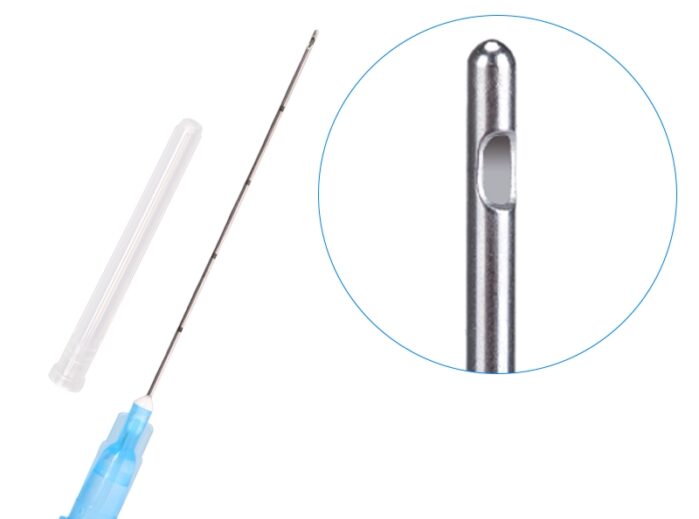Cosmetic injection is a minimally invasive medical aesthetic method that uses injectable needles to inject specific biological filler materials or agents into the target areas that need to be repaired and reshaped to achieve a more youthful and beautiful effect, which is popular among the majority of beauty lovers because of its simplicity, safety, light injury, little pain, fast recovery, and significant results, and is increasingly familiar and recognized by the public.
In the past, the conventional use of mostly sharp needles, sharp needle tip is hard, strong needle stabbing sensation, there is a certain degree of discomfort in the treatment; at the same time in a large area of injection requires multiple points into the needle, easy to cause discomfort in local parts of the body. Now the blunt needle is less likely to damage blood vessels and bleed less, so it is safer.
Applicable parts: Theoretically, it is applicable to any part of the face, but mainly used for: cheek/midface, nasolabial folds and jaw/chin.
Facial injection:
- Openings: an opening is made by shallowly piercing the skin with a 25G needle, through which the entire side of the face is injected.
- Zygomatic-cheek injection generally uses 25G/1.5 inch blunt needle;
- Blunt needle submerged level in the subdermis/periosteum;
- The other hand, which is not holding the syringe, is used to stabilize the skin to facilitate the subcutaneous diving of the blunt needle;
- Follow up operation is similar to needle injection (full-length insertion of cannula, retraction and simultaneous injection);
- The blunt needle may feel obstructed when moving under the skin, which is normal;
- Inject the filler from top to bottom, from deep to shallow, until satisfactory results are achieved;
- If necessary (rarely needed) can do a second needling opening;
- Light massage.
Nasolabial folds injection:
- Puncture an opening at the lower end of the nasolabial fold with a 27G needle;
- Use a 27G/1 inch blunt needle;
- Usually, one needle is enough to pierce the entrance, but a second incision may be needed if the injection is needed below the corner of the mouth;
- Massage and smooth with your hand (with gloves), but be careful not to squeeze the filler out of the injection incision.
When hyaluronic acid is injected by blunt needle, hyaluronic acid comes out from the side of the needle, which is suitable for large area of filler injection, such as apple muscle, tear trough, etc… No bruising after injection; while sharp needle is suitable for small area and fine injection site, such as chin augmentation, etc… Therefore, the combination of two needles is better than just one needle, which can take into account better safety and results.
Whether it is sharp needle injection or blunt needle injection, it requires the injection physician to know the human facial anatomy level, blood vessels, nerves and expression muscle distribution like the back of his hand, and at the same time strictly control the injection dosage, so that the cosmetic injection can achieve a safer and more natural effect.








